The hole was gaping, as were others where the pulleys were mounted on the boom for the line controlling the sail. It was way past time to replace these aging corroded aluminum booms, both upper and lower. I had convinced myself that replacement must happen before the next sail.
But in a reconsideration and inspection of the rigging, I reminded myself that I had already through-bolted the fittings, and after adding a short piece of line as a “preventer”, I moved ahead with a sailing plan.
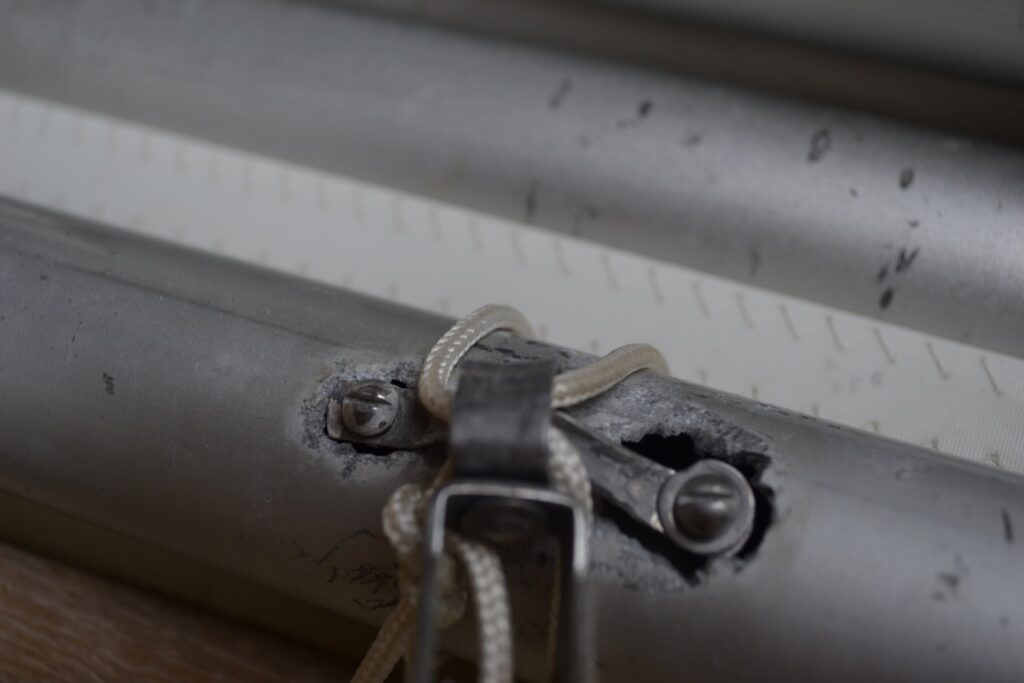
The marine forecast and tide projection were lined up for a sail out to Bull Island and a long walk; a weather system prevailed with a warm southern wind. Arriving at the landing mid-morning the Intracoastal Waterway was a wind-less mirror. During rigging, the south wind appeared in Anderson Creek, and gradually filled in before I launched Kingfisher. Raising sail and casting off, we were quickly underway in a long upwind voyage through the creeks and marshes to the island.
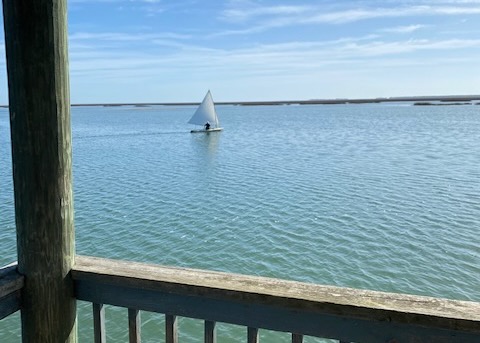
The course was familiar, though old challenges came into focus. I encountered the outgoing tide as alternating help and hindrance, and observed my brain shifting into a tactical strategy mode when the current was opposed to my progress. I reverted to other physical techniques not employed on land, like using my teeth when sheeting in. In the last long section of Bull Creek before making the turn into Summerhouse Creek I encountered the first two other boats of the day, one a refuge craft. The public dock was empty when I landed, and the only company was a pod of dolphin along the marsh.
The walk I planned took me by the Dominick House to Beach Road across the island. In passing the large live oaks by the house, a black shape was climbing one of those trees, and I circled around to get a look at the fox squirrel. It was feeding on acorns, and as it passed to the other side of a great limb, I continued my circle where I met it face-on. It moved down the limb covered with resurrection fern, scuttled down an adjacent palmetto trunk, and proceeded to bury the acorn. After finishing this task, it casually trotted off.
The island was warm, and shorts and t-shirt were my garb for this mid-seventies day. The full sun was a beacon for alligators to bask, and several appeared on the Beach Road. This gator showing was a sign I would experience many more on the walk across the Jacks Creek levee.
The beach walk was a glory of island solitude. I expected the southern breeze to cool off the strand, and was surprised that the wind had died. My loop would be around six miles, and I hustled along as I approached the Boneyard, snacking on the fly. I was on the lookout for about five wooden timbers from a buried vessel I had seen in November, protruding just a few inches from the sand. I was most surprised to find those timbers and more quite exposed from stem to stern, a distance I paced off around eighty feet. There was planking still connected to the ribs, and a wooden piece at the stem with a large hole appeared to be a mast step. This vessel’s story and history was also buried.
This wooden frame was not hidden in some out of the way place – it was on a main path where ferry passengers walk down the beach toward the Boneyard. It is important to remember that the remains of this vessel is protected by the Antiquities Act, and should not be disturbed.
Leaving that wooden relic I entered the skeleton forest that is the Boneyard. While some trees remained upright and rooted, others lay in piles along the high tide line, particularly palmettos near the Moccasin Pond outlet.
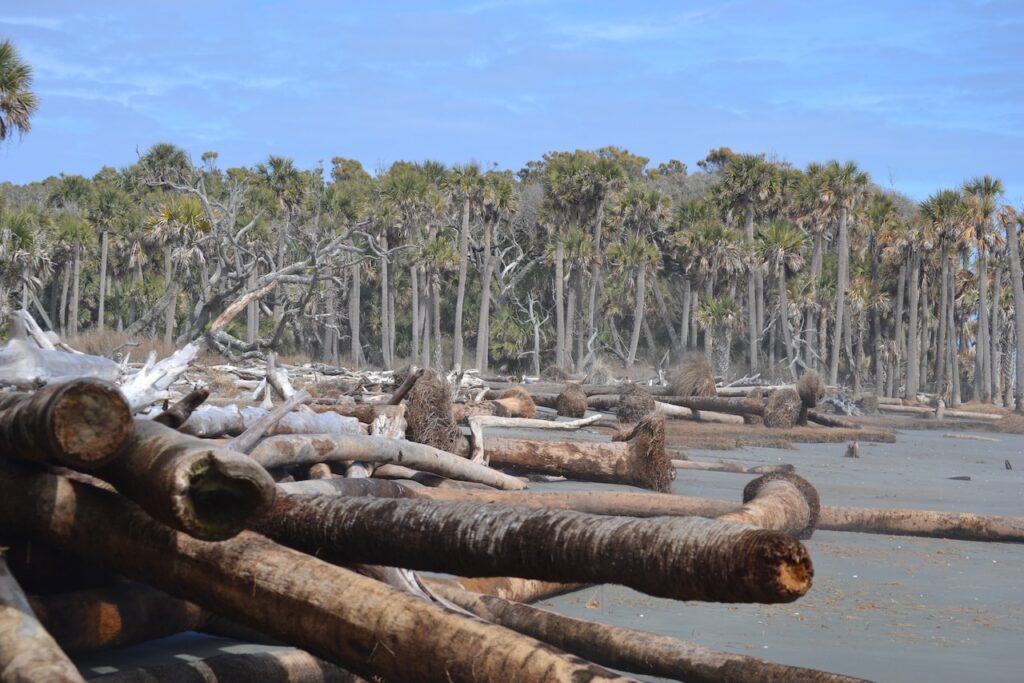
These Boneyard scenes were very familiar, but another was not. A high scarp cut into the upland was backed by a road, and I realized that a former path leading from this road to the beach was completely obliterated. The trees from that narrow strip of land lay in piles on the beach, adding to the Boneyard. What was once a distinctive place had disappeared. The earlier exposed vessel frame was an earlier sign of the tremendous change occurring on the shore constantly.
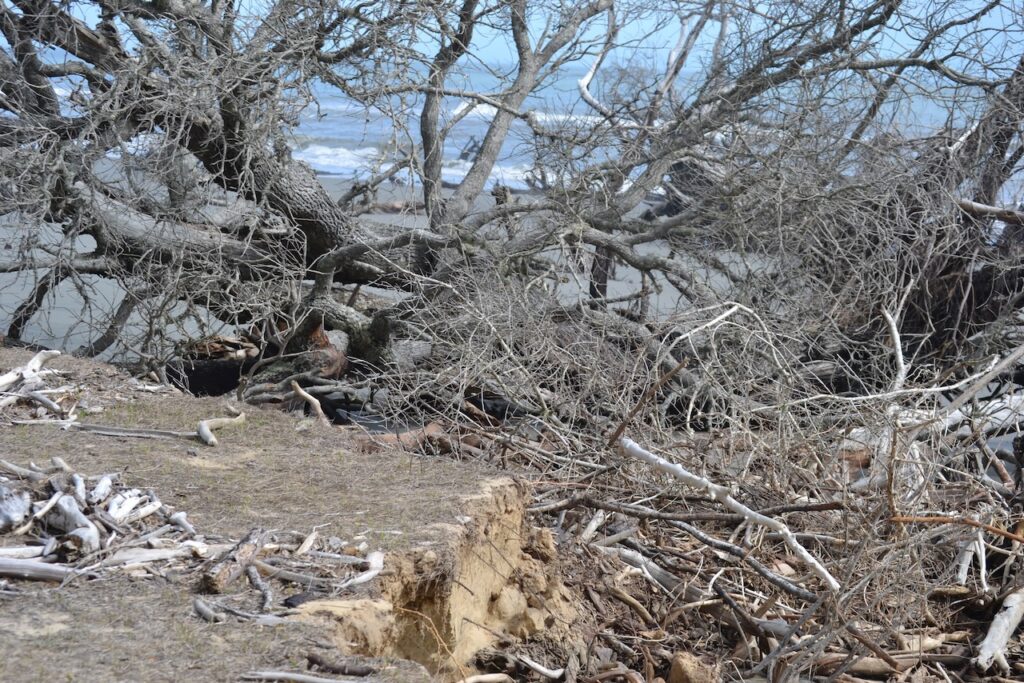
Having climbed up the scarp to view the scene, I decided to enter the road system rather than continue all around the Boneyard in making my way to the Jacks Creek cross dike. I passed another fox squirrel, more shy than the first. This road led past an outlook to Moccasin Pond, and finally to the junction with the Lighthouse Road.
I had not walked this section of the island in a while, and I took a look at this pond that was an upper finger of the Jacks Creek impoundment. The former berms had disappeared from the pond edge, I assumed for road fill elsewhere. This was the place where I first saw the legendary alligator of the island, known as Alligatorzilla, or Zilla, on this same date in 2006, sixteen years ago. The pond now held more water, and the original basking spot for Zilla was underwater. Yet to the left, in front of a large stand of marsh grasses, was a massive alligator, its tail hidden in the underbrush. Was it Zilla? Perhaps. In viewing the photograph later, turtles were also basking nearby, and waterfowl swimming along that far shore.
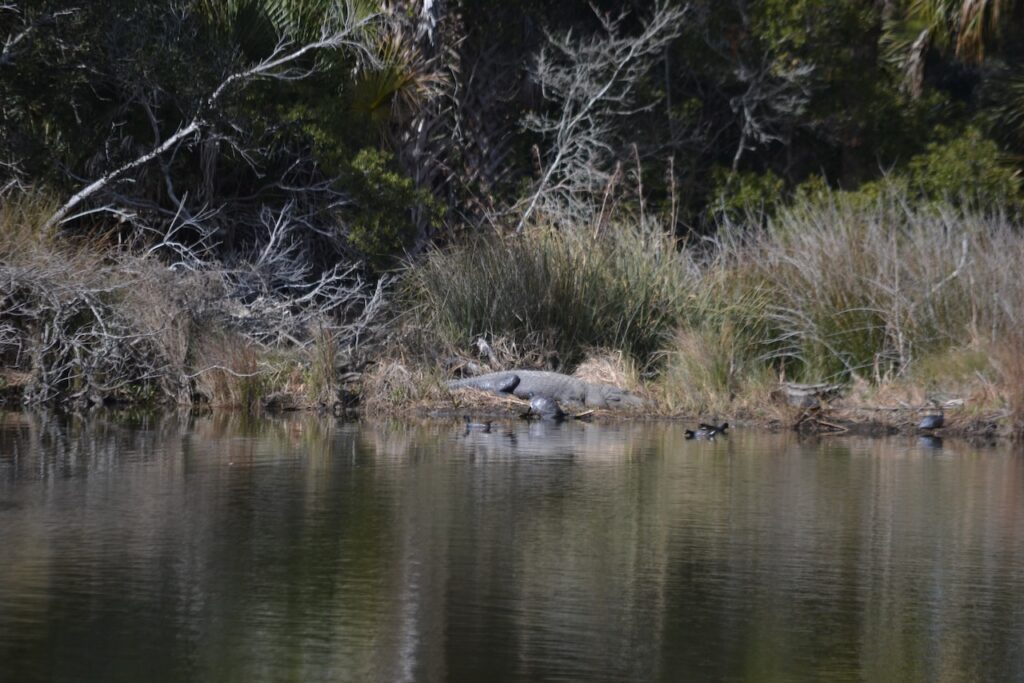
Back on the road heading north, I passed a section where the road was built up and the dike reinforced. Views to the ocean and a continued calm appeared to the east before I reached the cross dike, and turned to make the crossing. The left face of this levee had a southern exposure, and a number of alligators were basking on that side.
The levee stretches all the way across to the outside dike at the remains of the “Old Fort”, but halfway across a spur dike diverges to the south and connects with Sheepshead Ridge Road. That would be my path. Before arriving there, I saw multiple alligators lined up on the levee’s side, and along the top. A gauntlet awaited me, and I used noise (hand clapping, yelling) to move them off my way. Several hesitated, just moving to the dike edge. After I had passed the gathering, the waters near the dike were filled with dozens of alligators. One gator on the dike gave a good showing of its teeth. Alligators have between 74 and 80 teeth, each is hollow, and a new tooth grows inside for ready replacement. It is estimated that alligators can go through 2,000 to 3,000 teeth in a lifetime.
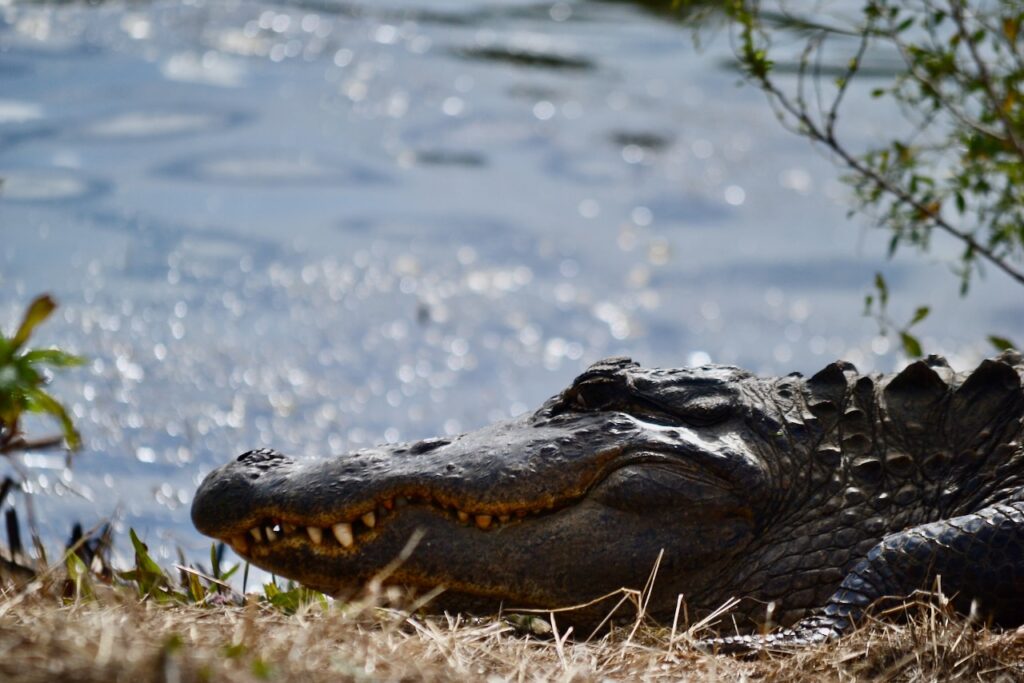
The south wind appeared to be restored. Past the observation tower, I walked on at a good pace to finish the walk. Another pair of fox squirrels appeared on this road. The first yellow jessamine blooms I have observed this year appeared on a palmetto.
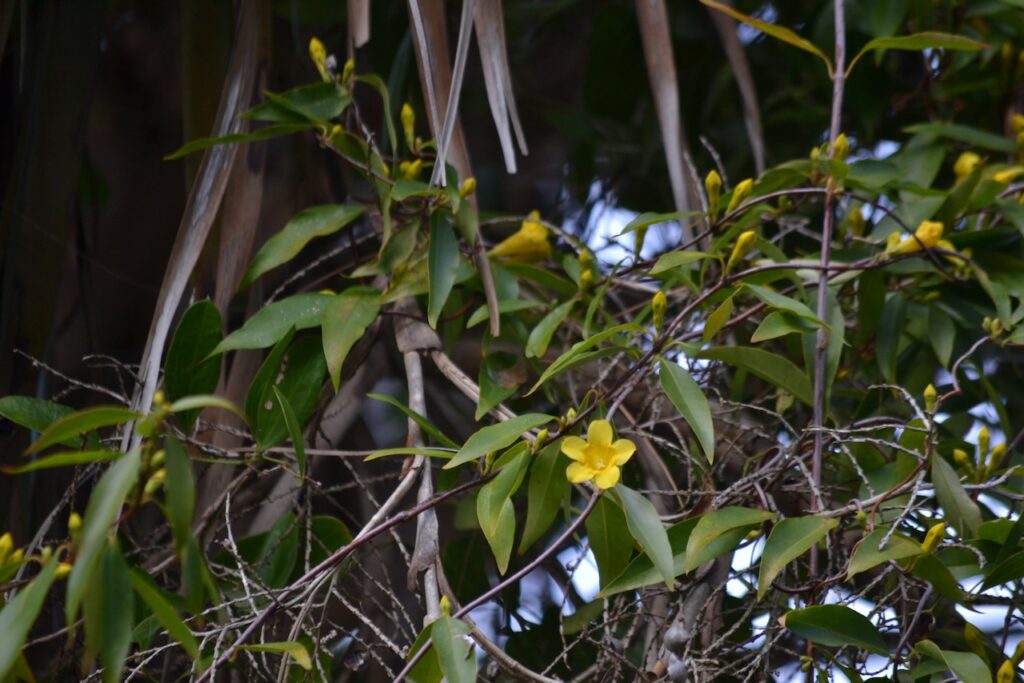
I completed the walk back at the empty public dock. Preparing again to sail, I cast off, but needed a brief return to the dock to reconnect part of the rigging.
The sail plan of beating out to the island, and then returning downwind to the mainland, came to fruition – it was reaching and running all the way, and the incoming tide was favorable for much of the sail. I passed several boaters stopping to harvest oysters, with one couple accompanied by their jack russell on a small oyster isle.
The passage was easy and relaxing, perhaps lulling me before the landing. It began as awkward, and the long day and my depleted energy contributed to a muddy deck and sail, and near swim. After pulling Kingfisher out, dropping the mast, and securing all to the trailer, a light rain started, and a shower commenced on the ride home. I reflected on the superb weather and the fine treatment by the wind gods, and was grateful for It all.
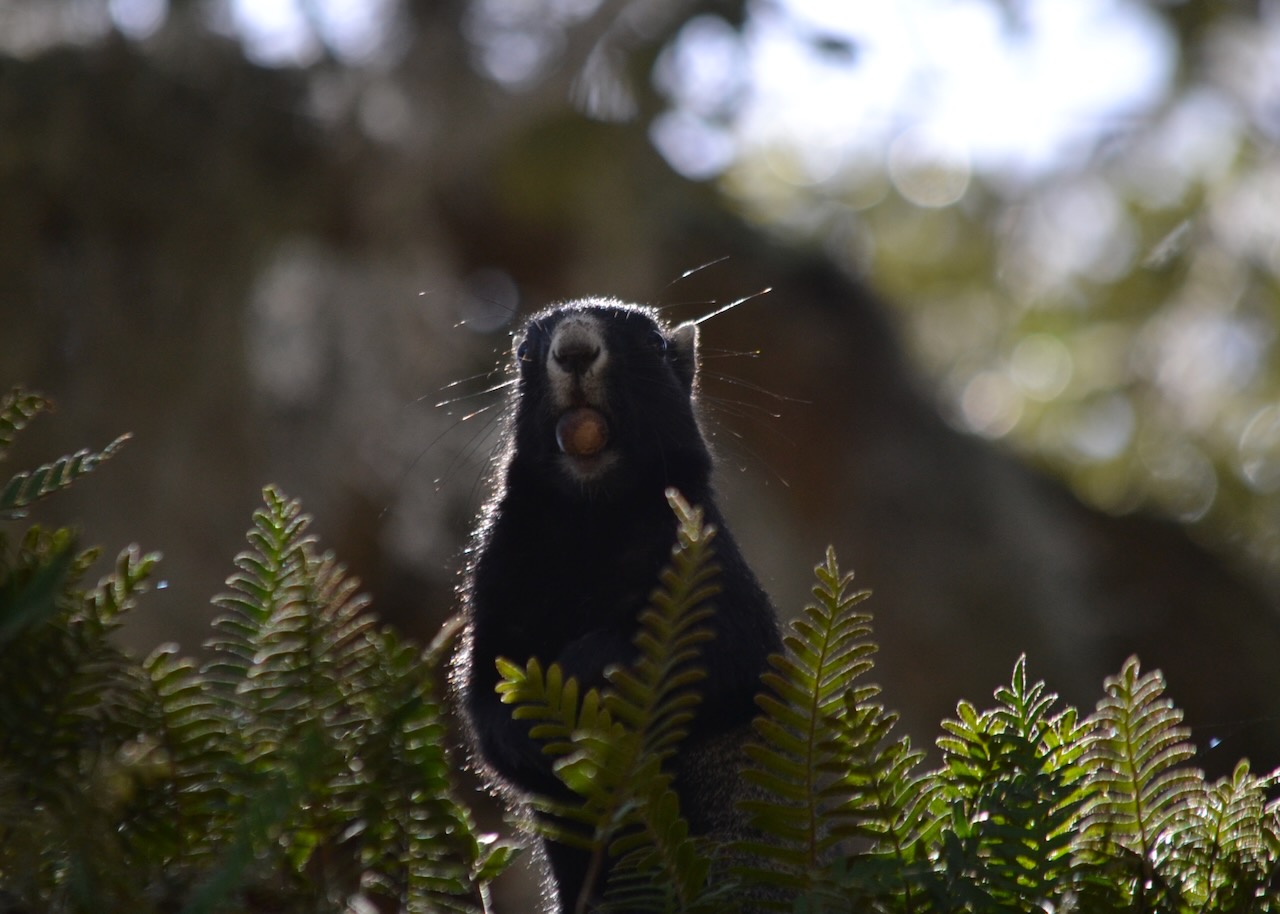
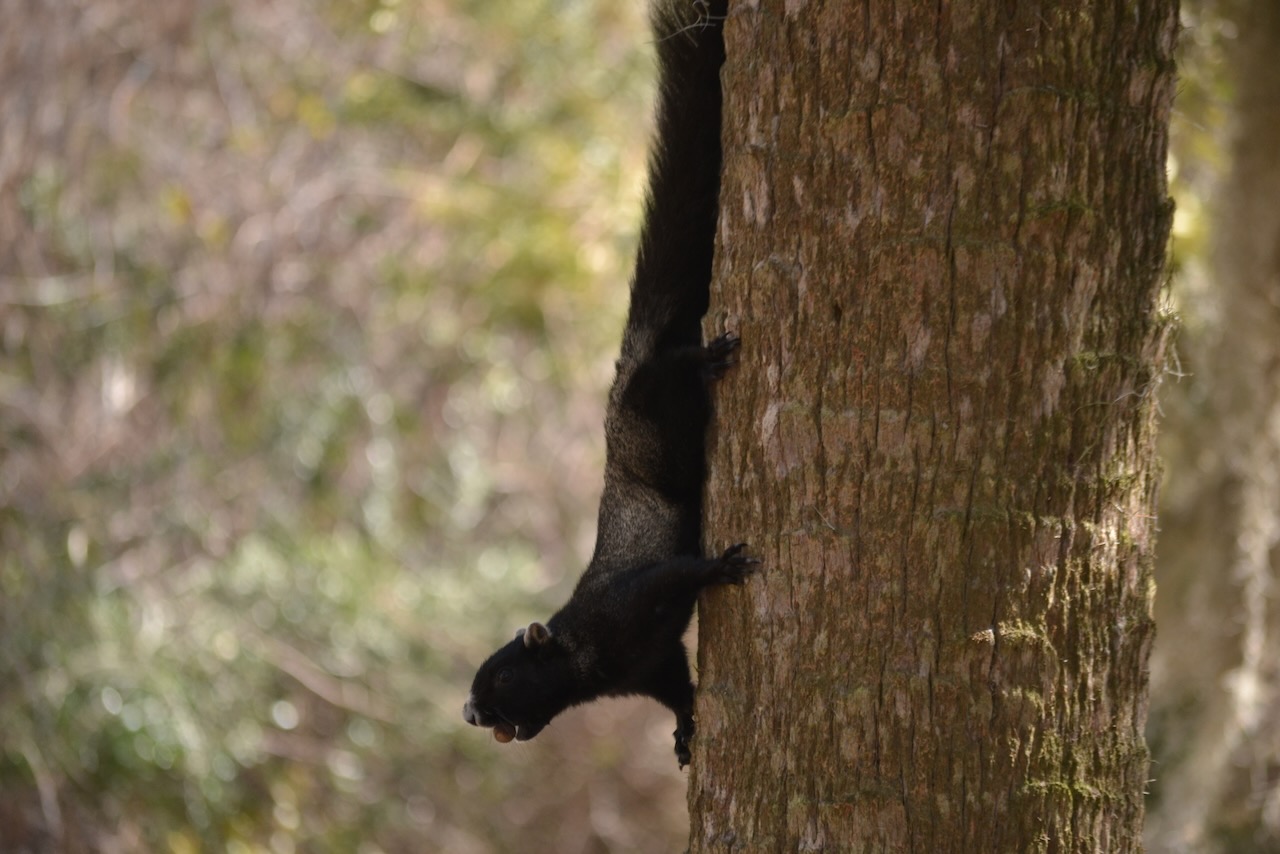
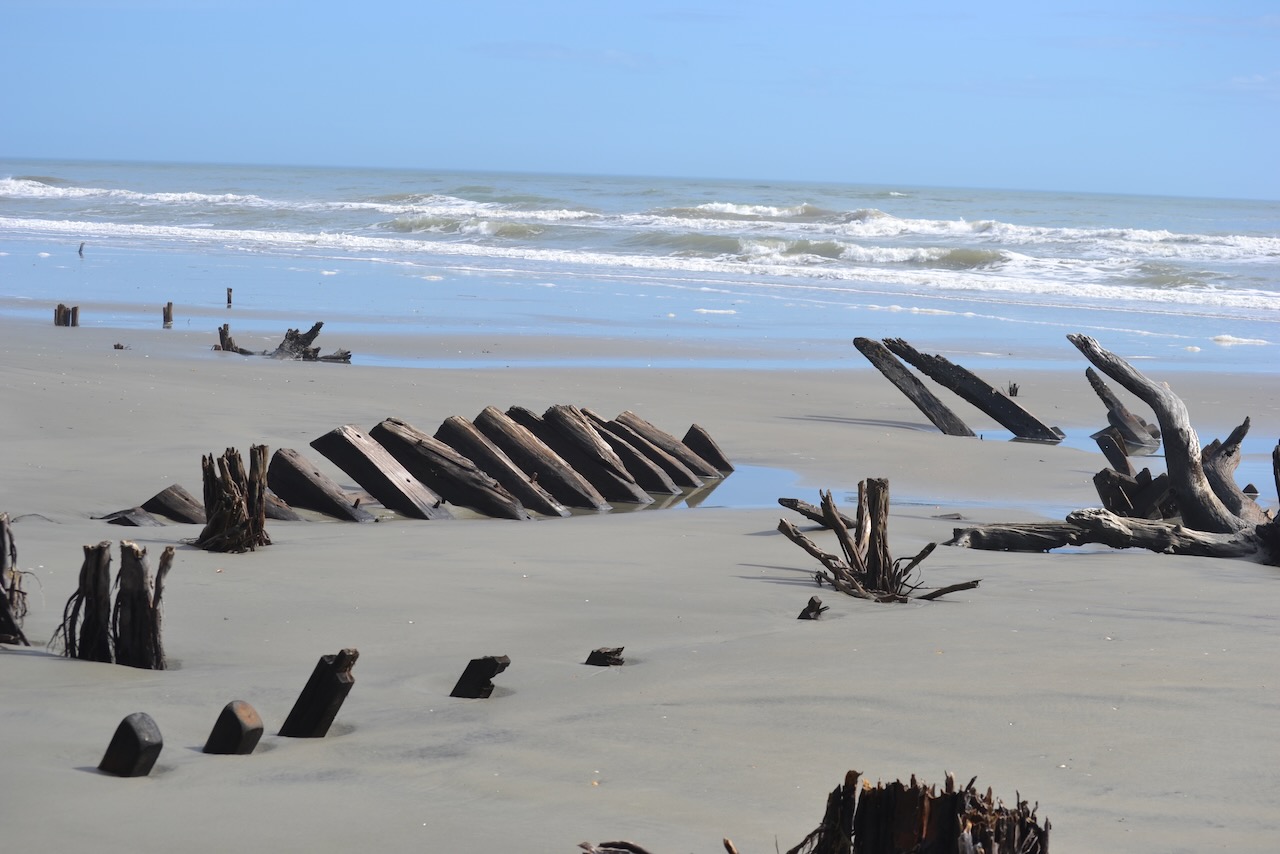
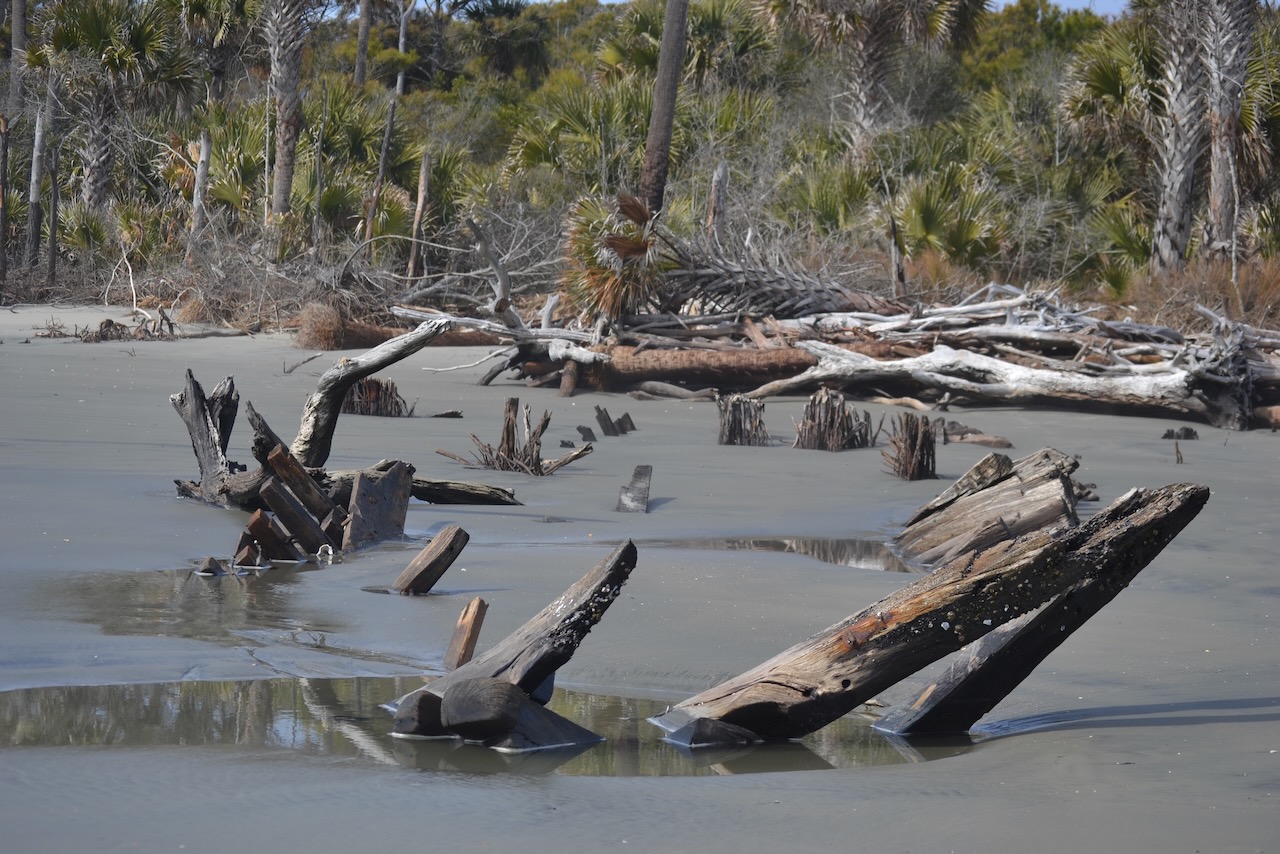
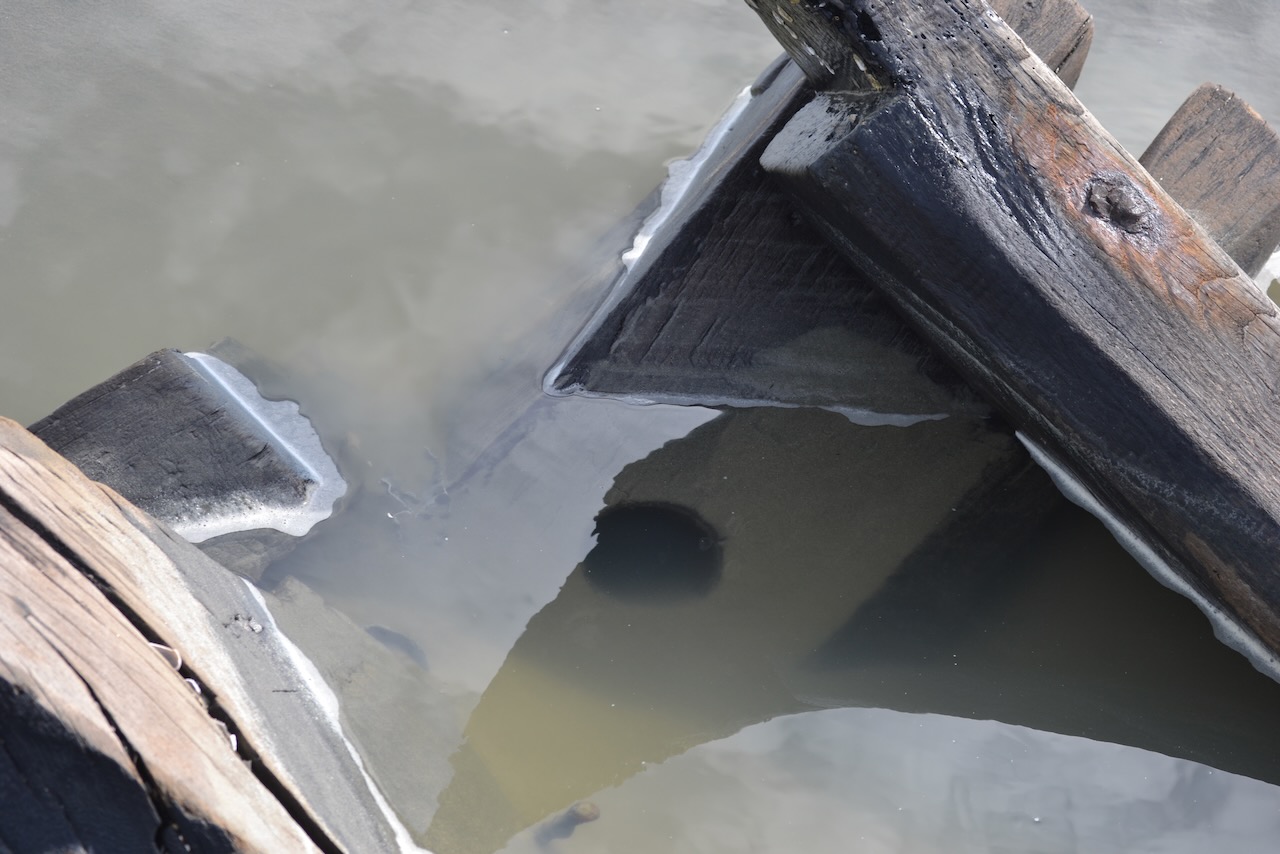
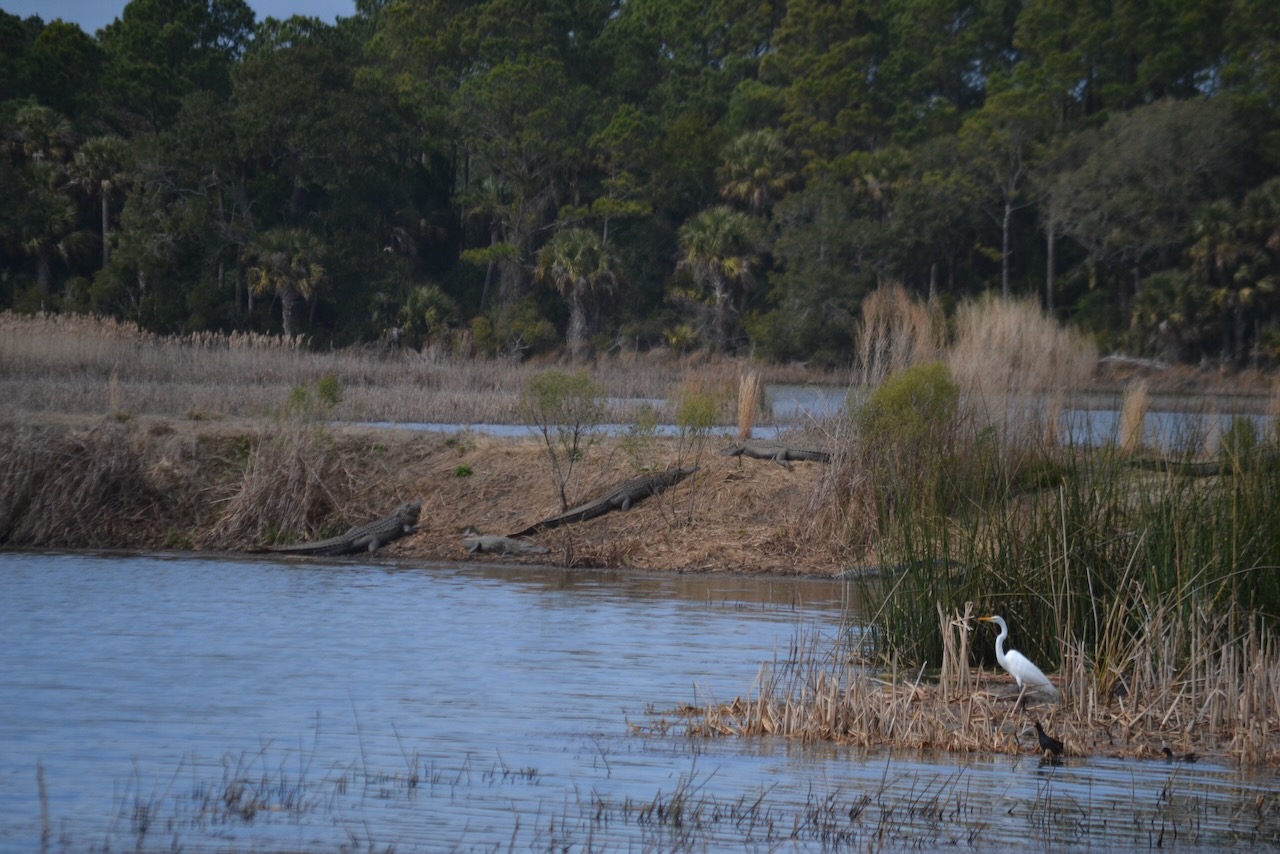
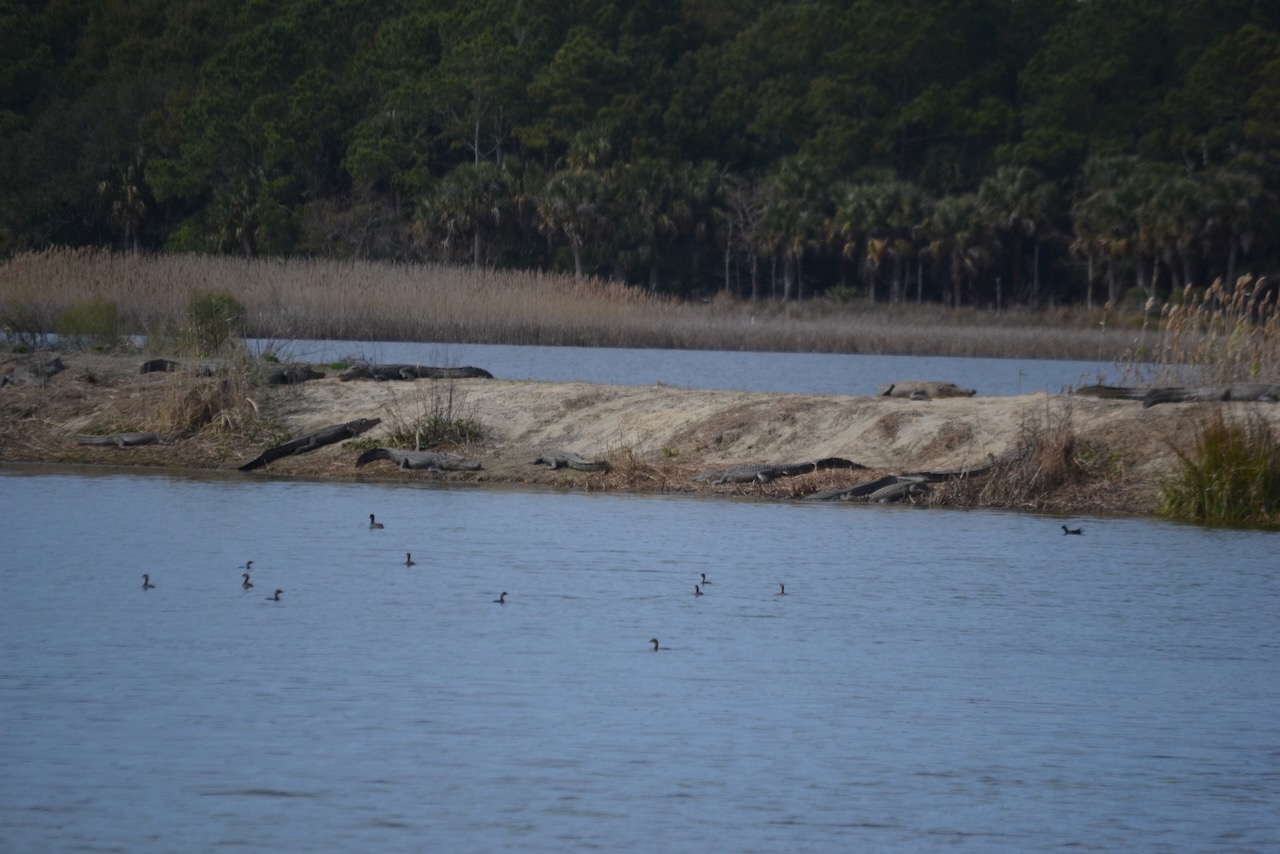
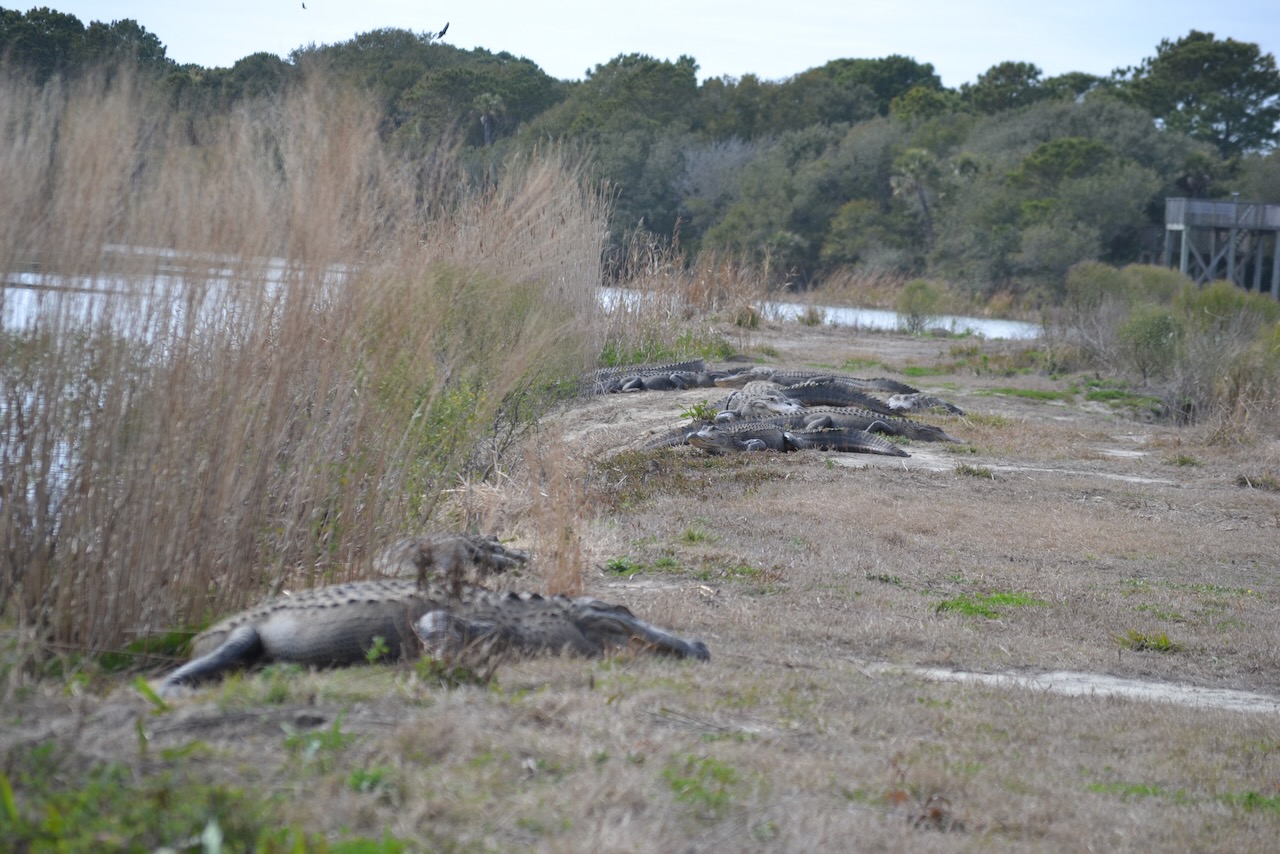
A great day Bob! I was delighted to see the fox squirrels..The habitat for a healthy population of them was destroyed by Hugo. Maybe they are rebuilding a sustainable population. Excellent.
Most fox squirrels I have seen, although the live oaks around the Dominick House is always a regular place for them. They are alive and well.
Hi Bob,
This was a beautiful description of what sounds like a wonderful day. I am embarrassed at how long it’s been since I’ve taken the time to follow up on your posts. Thank you so much for publishing them.
The “boys” and I are all getting old, and have been reduced for some years to “house camping”, but we are going to McClellanville in a few weeks for one more trip…
I hope you are well.
I can relate – becoming an ancient mariner.
Incredible pictures! I never knew about fox squirrels so thanks for sharing!